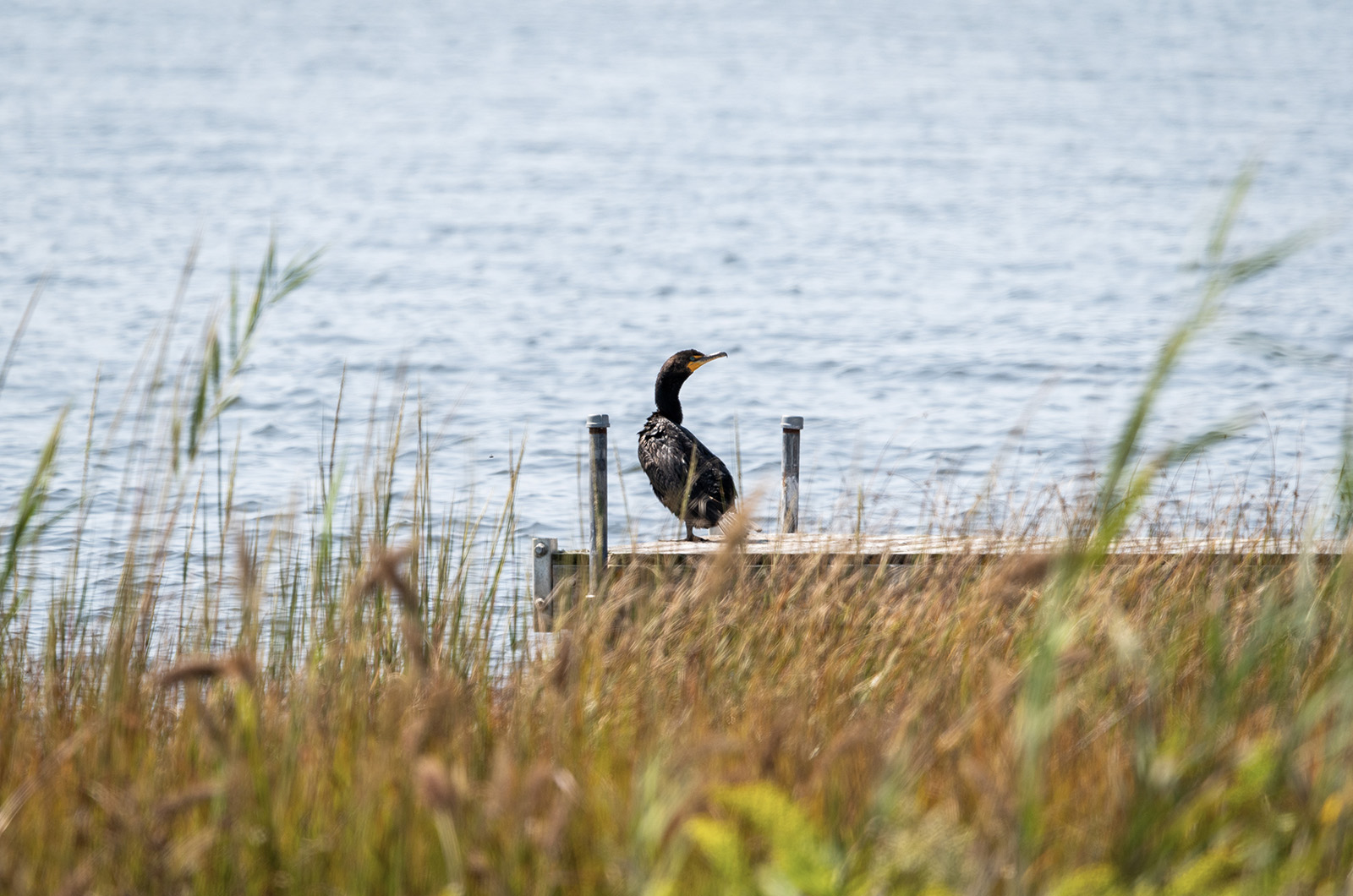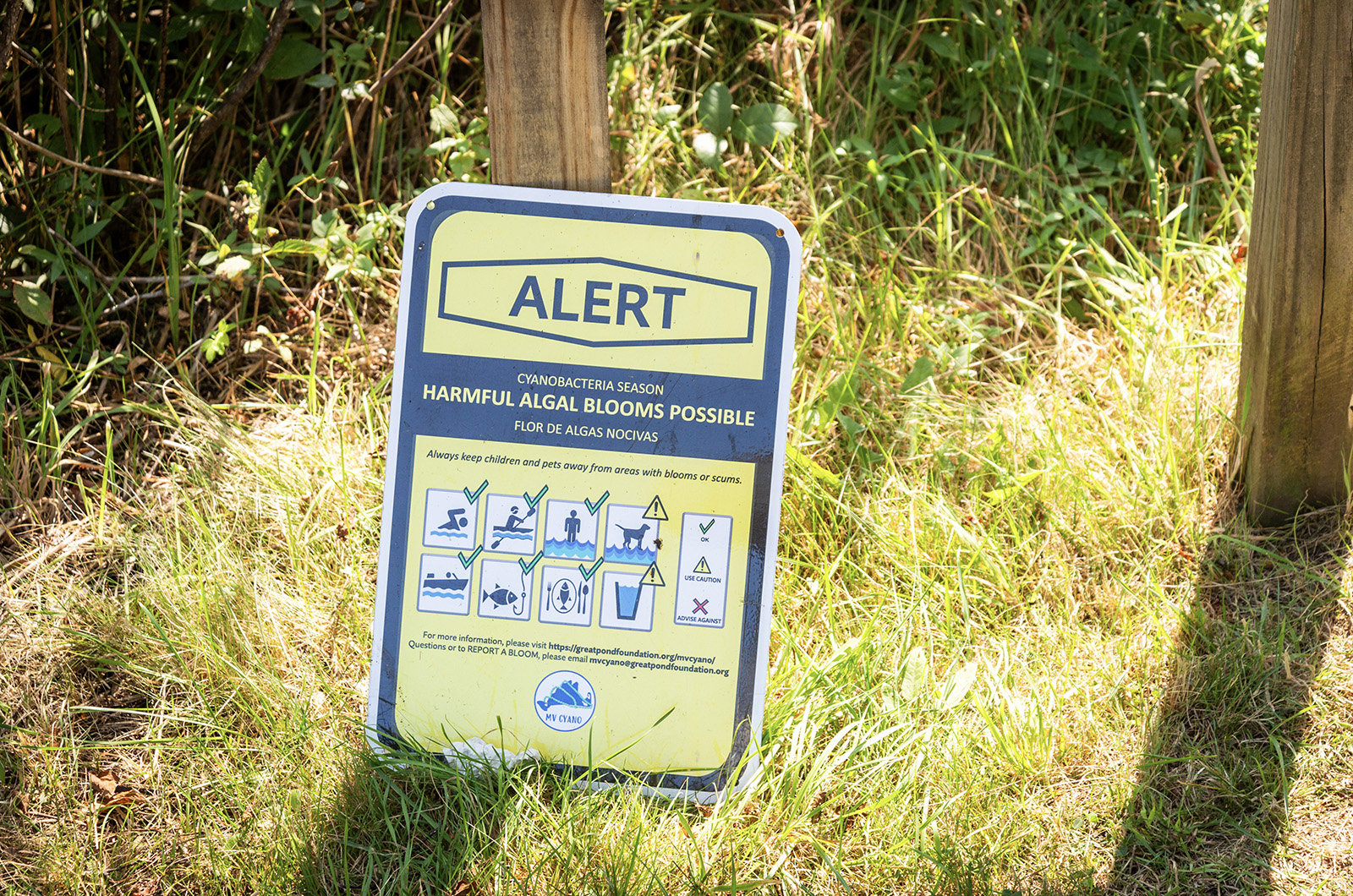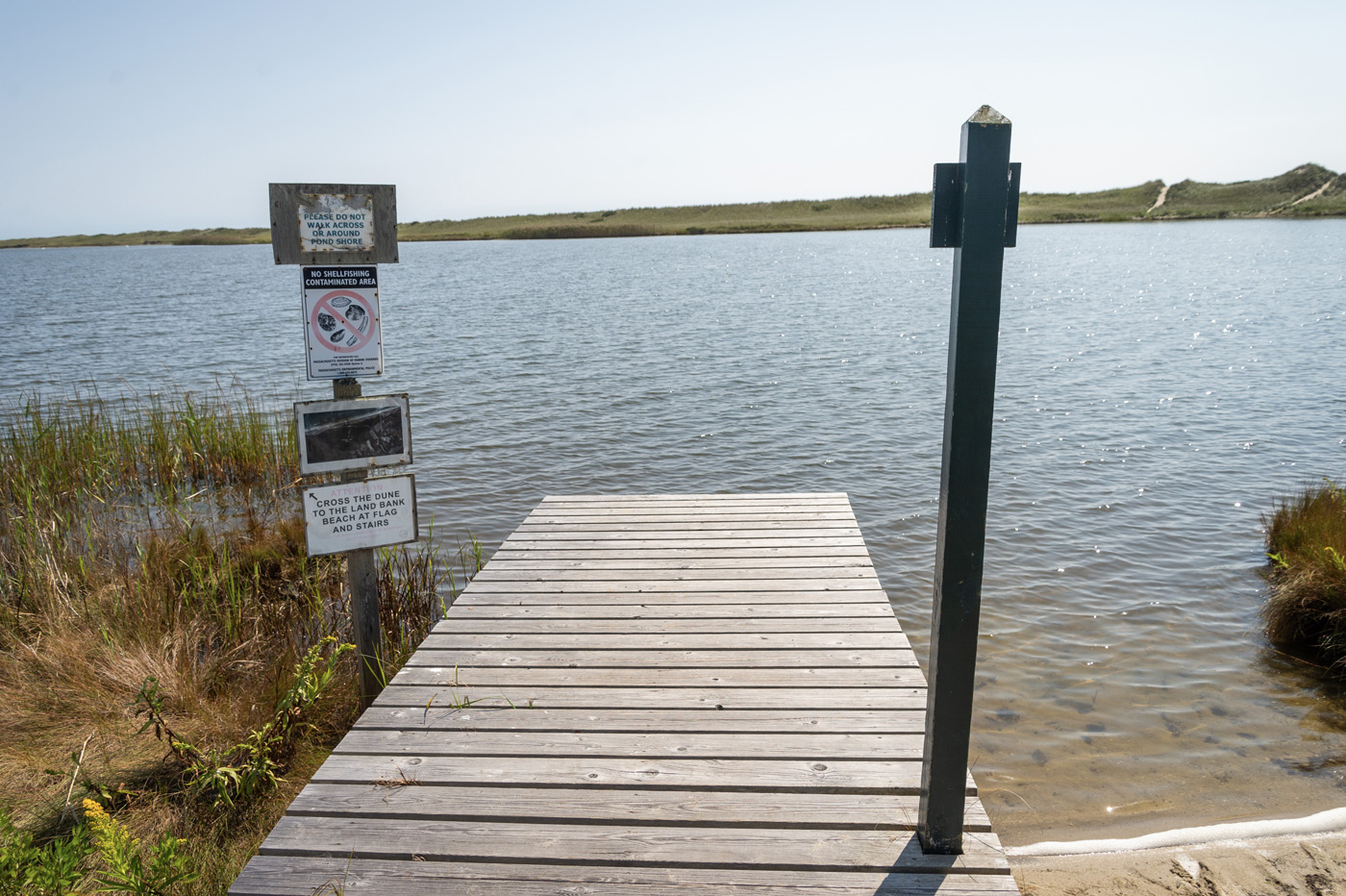Local scientists and advocates are undertaking new research and exploring new preservation efforts in an attempt to save one of Martha’s Vineyard’s unhealthiest ponds from harmful algal blooms.
Chilmark Pond, one of 16 Great Ponds on the Island, has seen high levels of nitrogen for years, and warnings over cyanobacteria blooms are now regular events. For the past four months, parts of the pond have been under the highest warning level for poor water quality.
Now scientists are considering ways to improve the water quality, aided by state-of-the-art technology that can identify nitrogen-loaded “hot-spots” in the pond linked to septic systems, agricultural runoff and other sources.
“Cyanobacteria is a global problem,” said Emily Reddington, Chilmark Pond Foundation program director. “There are innovators from around the world who have come up with solutions . . .so [we’re trying to] find and vet solutions that are not only going to have potentially beneficial impacts, but to also rule out any ones that could damage the ecosystem.”
Situated along Chilmark’s south shore, the pond splits into three areas, known as upper, middle and lower Chilmark Pond. High nitrogen counts have been documented in the pond going back to at least 2014, when the Massachusetts Department of Environmental Protection issued a report through its estuaries project stating that nitrogen levels were at their limit.
Since then, cyanobacteria blooms have proliferated. Known for their blue-green color, cyanobacteria are a group of single-celled photosynthetic organisms. When present in high concentrations, known as blooms, the bacteria produce toxins that can be harmful to humans and dogs.
Chilmark Pond began to show signs of environmental decline in the 1980s, when human activity and development increased, according to Amy Salzman, an ex-officio member of the pond foundation. The recent rise in storm activity has helped exacerbate the problems, as sand is pushed in and ponds become shallower.
“The ecological health of Chilmark Pond and all the ponds on the Island and on the Cape has been deteriorating over the years because of a variety of things,” Ms. Salzman said. “Nitrogen is number one [and also] because of more violent storm activity that is pushing sand [into the ponds]. Nature wants to basically close these ponds.”
The pond foundation is exploring various methods to improve the water quality, including sonic technology, where ultrasonic waves are sent out by a device at the bottom of the pond to prevent cyanobacteria from forming.
“It sends out a frequency that reduces the ability of cyanobacteria to metabolize or grow well,” Ms. Reddington said. “This sonic pulse that goes out is adaptive, and it can change in response to real-time monitoring, so the system that would go out is not harmful to plants, animals, or humans.”
The technology is manufactured by LG Sonic, whose algae-control devices are used worldwide. Long Island is currently adapting this method in Lake Agawam.

Another technique is thin layer placement, where nitrogen and phosphorus-rich mud are removed from the pond bottom and deposited along the shoreline, building up marshes and increasing pond resiliency in the process, according to Ms. Reddington.
“It’s a climate resilient strategy, because marshes are really resilient when it comes to climate change,” she added. “It would prevent erosion, but it would also get those [dangerous] nutrients out of the pond and improve the water quality and lower nitrogen and phosphorus. [It then] reduces the likelihood of cyanobacteria blooms and other types of ecosystem impairment.”
Thin layer placement is already being used in Rhode Island, New Jersey, New York and Connecticut. Massachusetts is developing a pilot program, with Chilmark Pond under consideration as one location for the pilot.
“The fact that the doors are opening to even consider this project is a wonderful thing,” Ms. Reddington said.
Javier Lloret, a scientist with the Marine Biological Laboratory in Woods Hole, received a grant this summer to collaborate with the Great Pond Foundation to improve Chilmark Pond as well as Edgartown Great Pond.
Mr. Lloret, who gave a presentation on past work with the ponds in August, plans to employ modeling techniques and isotope analysis to trace where nitrogen comes from.
In his presentation, Mr. Lloret said about 58 per cent of the nitrogen in Chilmark Pond comes from wastewater, and a large share of the added nutrients can be isolated to a handful of coves.
“Some coves in some particular locations in these two ponds are responsible for the majority of inputs, which is going to have implications for the design of effective management strategies,” he said.
More traditional methods have been considered, too, though they have faced an uphill battle at times.
The Chilmark Pond Foundation applied for a dredging permit from the town conservation commission in 2019. Last year, the permit had reached the final stages when the U.S. Fish and Wildlife Service informed Ms. Salzman of the possibility of the presence of the endangered northeastern beach tiger beetle in the area where they were planning to put the sand.
The process of obtaining the permit remains ongoing while the foundation works with the Chilmark conservation commission to find a solution.
The town board of health is also involved. Modern-day septic systems are designed to keep fecal matter from contaminating the groundwater, but they do not mitigate the polluting effects of urine. “[Septic systems] are designed to do one thing very well,” Ms. Salzman said. “Urine is the source of a lot of nitrogen that is working its way through the groundwater into the ponds.”
A Martha’s Vineyard Commission report was released in 2023 with suggestions to decrease the amount of nitrogen coming from septic systems, including upgrading to innovative/alternative (I/A) septic systems, which are designed to remove more nitrogen. Tisbury currently has a requirement for the newer I/A systems.
The practice of “cutting” the pond to create a channel into the ocean for flushing is also done about four times a year, when conditions allow, said Ms. Salzman. This practice is still used in the Edgartown and Tisbury Great Ponds.
The foundation’s ultimate goal with all the efforts is self evident.
“People remember being able to bring your family in and spend the day splashing in the water and not thinking about the potential toxicity of cyanobacteria,” Ms. Reddington said. “I think both the goal and the path ahead is to figure out how to increase the health of the pond so that people can spend the time recreating and really celebrating nature, but also having it be healthy enough for nature to grow back.”







Comments (14)
Comments
Comment policy »